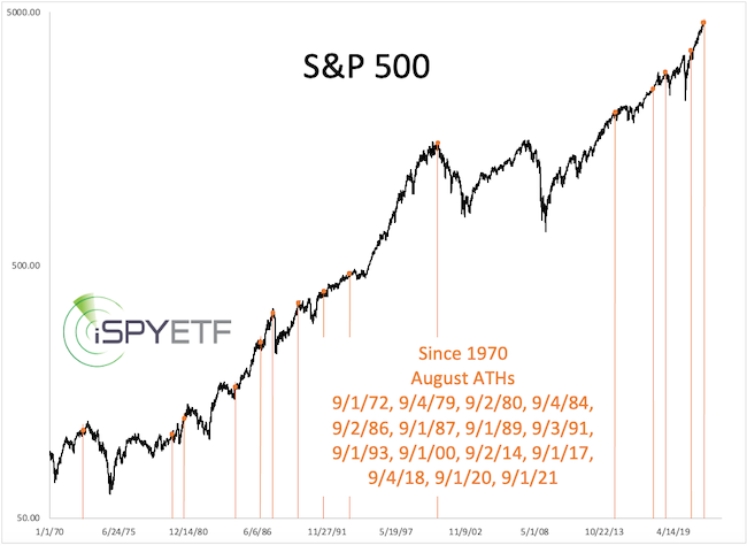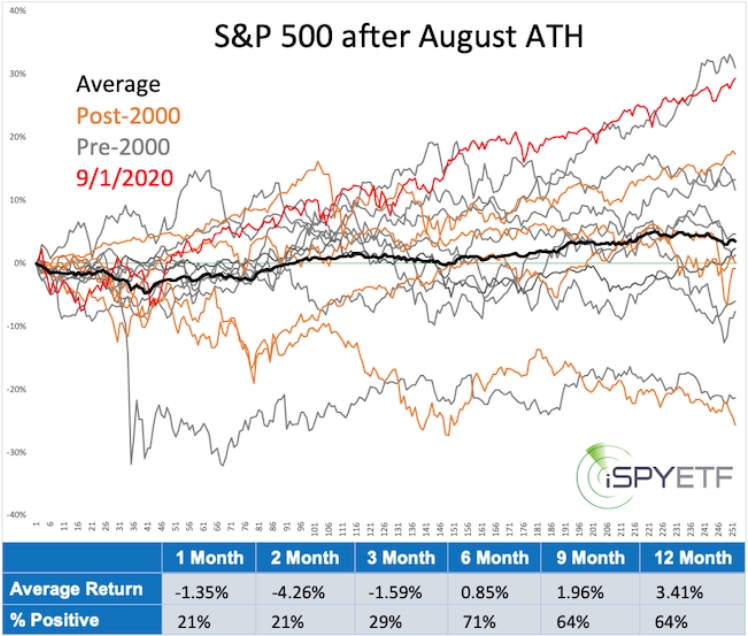August is not known to be a blockbuster month in terms of stock market performance. Yet, the S&P 500 finished August at an all-time high (ATH).
That sounds good, but statistically an August high tend to make investors cry and here is why:
August ATH signal dates
Since 1970, the S&P 500 ended the month of August at an ATH in the following years:
1972, 1980, 1986. 1987, 1989, 1991, 1993, 2000, 2014, 2017, 2018, 2020, 2021.
There was a 6-year high August 1979 and in 1984 the S&P missed an August ATH by only a few tics. To increase the sample size, I’ve included 1979 and 1984 in this study.
The chart below provides a visual of where the August ATHs occurred in the stream of time.
S&P 500 forward performance
To turn historic precedents into predictive patterns I aways calculate forward performance after past precedents. Forward performance starts from the signal date. We will use the first trading day of September as the signal date for each August ATH.
In terms of seasonality, September and October have always had a bad reputation. Performance during those two months in the 21st century, however, was not as bad as in the 20th century.
For that reason, the forward returns following signal dates prior to 2000 are shown in gray, post-2000 returns are shown in orange. The 2020 signal (red graph) defied all precedents with the exception of 1986.
Average performance (bold black graph) was flat. The performance tracker (table at bottom of chart) reveals that the S&P 500 was up only 21% - 29% of the time for the next 3 months (September, October, November) with a negative average return (1.35% - 4.26%)
Conclusion
Despite this short-term warning signal, the stock market has racked up many positives throughout 2020 and 2021 (in particular breadth and momentum) that usually translate into continued long-term strength.
Short-term, scaling back equity positions in major index ETFs like the SPDR® S&P 500 (NYSE:SPY), Invesco QQQ Trust (NASDAQ:QQQ) and SPDR Dow Jones Industrial Average ETF Trust (NYSE:DIA) may be prudent.
Longer-term, any pullback (the deeper the better) will likely be a launchpad for the next leg up.
